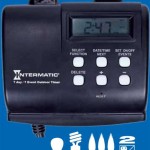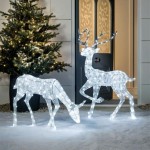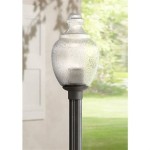Revitalizing Metal Outdoor Furniture with Rustoleum
Metal outdoor furniture endures significant exposure to the elements, resulting in corrosion and a diminished aesthetic appeal over time. Painting provides a cost-effective solution to restore and protect these pieces, extending their lifespan and enhancing outdoor living spaces. Rustoleum, a widely recognized brand, offers a range of paints specifically formulated for metal surfaces, providing excellent rust prevention and a durable, attractive finish.
This article details a comprehensive guide on how to effectively paint metal outdoor furniture using Rustoleum products, outlining the necessary steps, materials, and techniques to achieve a professional-looking result.
Preparation: Laying the Foundation for a Successful Paint Job
Thorough preparation is paramount to achieving a long-lasting and visually appealing finish. The condition of the existing furniture dictates the extent of the preparatory work required. This stage involves cleaning, rust removal, and priming.
Cleaning: Begin by removing any loose debris, dirt, and grime from the furniture's surface. A combination of soap and water, along with a scrub brush, is typically sufficient for this initial cleaning. For stubborn stains or mildew, a specialized outdoor cleaner may be necessary. Rinse the furniture thoroughly with clean water and allow it to dry completely before proceeding.
Rust Removal: Rust is a common problem on metal outdoor furniture. Addressing rust effectively is crucial to prevent its recurrence and ensure proper paint adhesion. Several methods can be employed for rust removal, depending on the severity of the corrosion.
Light Rust: For minor surface rust, a wire brush or sandpaper can be used to abrade the affected areas. Apply moderate pressure and work in circular motions to remove the rust without damaging the underlying metal. After removing the rust, wipe the surface clean with a tack cloth to remove any remaining debris.
Moderate to Heavy Rust: More substantial rust may require the use of chemical rust removers. These products typically contain phosphoric acid or other chemical agents that dissolve rust. Follow the manufacturer's instructions carefully when using chemical rust removers, including wearing appropriate personal protective equipment (PPE) such as gloves and eye protection. Apply the rust remover to the affected areas and allow it to dwell for the recommended time. Then, scrub the surface with a wire brush or abrasive pad to remove the loosened rust. Rinse thoroughly with water and allow to dry completely.
Severe Rust: In cases of severe rust, media blasting may be the most effective option. This process involves using compressed air to propel abrasive materials, such as sand or crushed walnut shells, at the metal surface, effectively removing rust and existing paint. Media blasting requires specialized equipment and should be performed in a well-ventilated area with appropriate safety precautions.
Priming: After cleaning and rust removal, applying a primer is essential for ensuring proper paint adhesion and preventing future rust formation. A metal primer, specifically formulated for outdoor use, is recommended. Rustoleum offers a range of primers suitable for metal surfaces, including those designed for rust prevention. Ensure the furniture is completely dry before applying the primer.
Apply the primer in thin, even coats, following the manufacturer's instructions. Allow the primer to dry completely before proceeding to the painting stage. Depending on the primer used, multiple coats may be recommended for optimal protection. Lightly sand the primed surface with fine-grit sandpaper to create a smooth base for the topcoat.
Selecting the Right Rustoleum Paint and Applying It Effectively
Rustoleum offers a variety of paints suitable for metal outdoor furniture. Choosing the right paint depends on the desired finish, durability requirements, and aesthetic preferences. Consider factors such as gloss level (matte, semi-gloss, gloss), color options, and specific features like rust resistance and UV protection. Rustoleum's "Stops Rust" line is a popular choice for outdoor metal furniture due to its excellent rust prevention properties.
Paint Application: Two primary methods are commonly used for applying Rustoleum paint: using a spray can or using a brush. Each method has its advantages and disadvantages. Spray painting provides a smooth, even finish, especially on intricate designs, while brushing offers more control and allows for precise application in hard-to-reach areas.
Spray Painting: When using a spray can, shake it vigorously for at least one minute before each use to ensure proper mixing of the paint. Hold the can approximately 10-12 inches from the furniture's surface and apply the paint in thin, even strokes, overlapping each stroke slightly. Avoid holding the can in one spot for too long, as this can cause drips and runs. Apply multiple thin coats rather than one thick coat, allowing each coat to dry completely before applying the next. Rotate the furniture as needed to ensure even coverage on all surfaces.
Brushing: When using a brush, select a high-quality brush designed for use with the type of paint chosen. Dip the brush into the paint, removing any excess. Apply the paint in smooth, even strokes, following the grain of the metal. Avoid applying too much pressure, as this can cause brushstrokes to be visible in the finished surface. Apply multiple thin coats rather than one thick coat, allowing each coat to dry completely before applying the next. Clean the brush thoroughly with mineral spirits or paint thinner after each use to prevent the paint from hardening.
Application Environment: Regardless of the application method, work in a well-ventilated area to avoid inhaling paint fumes. Avoid painting in direct sunlight or during periods of high humidity, as these conditions can affect the paint's drying time and adhesion. The ideal temperature for painting with Rustoleum products is typically between 50°F and 90°F. Refer to the manufacturer's instructions for specific recommendations regarding temperature and humidity.
Addressing Imperfections: If drips, runs, or brush marks occur during the painting process, allow the paint to dry completely and then sand the affected area with fine-grit sandpaper to smooth it out. Wipe the surface clean with a tack cloth before applying another coat of paint. For minor imperfections, a light touch-up may be sufficient. For more significant imperfections, it may be necessary to sand down to the primer and reapply the paint.
Post-Painting Care and Maintenance
Proper care and maintenance are essential for preserving the finish of painted metal outdoor furniture and preventing future rust formation. Following these guidelines will help extend the lifespan of the furniture and maintain its aesthetic appeal.
Drying and Curing: Allow the paint to dry and cure completely before using the furniture. The drying time will vary depending on the specific Rustoleum paint used and the ambient temperature and humidity. Refer to the manufacturer's instructions for recommended drying times. Curing refers to the process by which the paint film fully hardens and achieves its optimal durability. This process typically takes several days to several weeks, depending on the paint type and environmental conditions.
Cleaning: Regularly clean the painted furniture to remove dirt, grime, and mildew. Use a mild soap and water solution and a soft cloth or sponge. Avoid using abrasive cleaners or harsh chemicals, as these can damage the paint finish. Rinse the furniture thoroughly with clean water and allow it to dry completely.
Protection from the Elements: When not in use, consider covering the furniture with waterproof covers to protect it from rain, snow, and direct sunlight. This will help prevent fading, cracking, and rust formation. Store the furniture in a dry, sheltered location during the off-season. This will further protect it from the elements and extend its lifespan.
Touch-Ups: Periodically inspect the furniture for any signs of damage, such as scratches, chips, or rust spots. Address these issues promptly by touching up the affected areas with Rustoleum paint. Lightly sand the damaged area with fine-grit sandpaper to smooth it out, wipe it clean with a tack cloth, and apply a thin coat of paint. This will prevent the damage from spreading and maintain the overall appearance of the furniture.
Waxing (Optional): Applying a coat of carnauba wax to the painted surface can provide an additional layer of protection and enhance the shine. Apply the wax according to the manufacturer's instructions and buff it to a smooth finish. Waxing should be performed periodically, typically every six months to a year, to maintain its protective benefits.
By following these steps and utilizing Rustoleum products effectively, individuals can successfully revitalize their metal outdoor furniture, providing a durable, attractive finish that will withstand the elements for years to come. Consistent maintenance and prompt attention to any signs of damage will further ensure the longevity and aesthetic appeal of these pieces.

How To Paint Metal With Rust Oleum Universal

Outdoor Furniture Transformation

Outdoor Furniture Transformation

Lavish Lawn Furniture

How To Rejuvenate Faded Metal Outdoor Furniture Using Rust Oleum Spray Paint Everyday Old House

How To Spray Paint Metal Outdoor Furniture Last A Long Time H2obungalow

How To Paint Metal Patio Furniture

How To Spray Paint Metal Outdoor Furniture Last A Long Time H2obungalow

Spray Paint Mesh Metal Outdoor Patio Furniture Petticoat Junktion

Spray Paint Mesh Metal Outdoor Patio Furniture Petticoat Junktion







